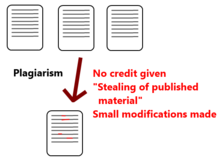While submitting a manuscript to a journal, it is very important to include an impressive cover letter to the editor-in-chief. The cover letter provides a glimpse of the results and data presented in the manuscript, including the experimental study design. Based on the content of the cover letter, the journal editor would make an important decision of accepting the article with revisions or directly publishing it. In most cases, the paper is forwarded to reviewers based on the content of the cover letter and manuscript. A cover letter should be typically of 1-2 pages. In this article, we guide you on how to write a professional yet persuasive cover letter that attracts the attention of the journal editor.
Salient features of a cover letter to a journal editor:
- A cover letter must include the name of all authors, including the names of corresponding authors. Contact details of authors, such as email addresses and the actual address must be provided at the start of the cover letter. In most cases, authors prefer to use the institute’s letterhead. In general, letterhead is standardized and contact details have to be provided at the end of the cover letter. Always write your signature at the end of the cover letter. Contact details are necessary as the editor would contact you based on their decision, regardless of whether it is positive or negative.
- In some journals, the editors of different regions are different. For example, the European version of the journal would have an editor that is different from the American version of the journal. In this case, please ensure that the correct editor is addressed in the cover letter. The title and the name of the editor should be written correctly and in full form. A journal’s webpage usually enlists the names of editors. Never write “Dear Sir” or “Dear Madam” as a salutation. In case the name is not provided on the journal’s webpage, then the salutation would be “Dear Editor” or “Dear Editor-in-chief.”
- The cover letter has to be written in a unique style. As an author of a manuscript, you cannot simply include important results as copied paragraphs. The important findings and results should be reworded in simple and short sentences. The journal editor should be convinced that you spent time drafting the cover letter.
- Before drafting a cover letter, please double-check whether the topic of your research study is compliant with the journal’s theme, scope, and subject. A cover letter should be written in a constructive tone and style. The title of the manuscript should be presented as it is in the cover letter. The title should be the one that’s presented in the final draft of the manuscript. Then, declare the type of work that is presented in the manuscript. It could be any one of the following: an article, a meta-analysis, short communication, or a perspective.
- There may be instances where the authors have submitted the article to another journal earlier. In that case, authors must take into account the current journal’s submission criteria, theme, and interests. Thus, they should address the current journal’s editor by his or her proper name, and change the wordings of the cover letter. In case the article has been rejected by a previous journal, then the authors must mention the reason for rejection in the cover letter. The authors should never submit a manuscript to two or more journals simultaneously. Most journal editors do not review a manuscript that has been already submitted elsewhere for publication.
- The important content of the cover letter is just one or two paragraphs that summarize the novelty of the scientific research. All important points of the research findings must be included in this cover letter. These two paragraphs should neither be too long nor very short. The experimental study design and the special techniques used in the research study should be presented concisely. All innovative results of the study should also be included.
- The cover letter must include the significance of the study and the rationale behind experimentation. It must explain why the paper is suitable for publication in a specific journal. The explanation must include why the paper is relevant to the scope of the journal. Moreover, the authors must also explain the importance of the research study and how it will entice the readers of the journal. The editor must be convinced that the paper will have a high impact in the particular field of study.
- In the cover letter, authors must also include the list of documents that they are submitting. For example, the final draft of the manuscript, supporting information, author information forms, answers to the comments provided by reviewers (This is done when a revised form of the manuscript is submitted to the editor). Please note that the cover letter is like a sales pitch that needs to be persuasive yet concise.
- In a cover letter, refrain from mentioning and defining abbreviations. Ensure that the content is correct in terms of grammar and punctuation. Avoid having spelling mistakes in the document. Carefully read the cover letter to ascertain its worthiness. After all, it is meant to be submitted to an editor of an international journal. The esteemed editor would be glad to know that the authors are eager to answer any queries related to the manuscript. Finally, place a note stating that the decision of the editor would be held in high esteem.
Harrisco is a reputed Korean company that offers cover letter development services to all researchers in Korea, China, Japan, and Taiwan. Established in 1997, it has become a brand to reckon with. It has a team of more than 200 native English editors from reputed universities of the USA, UK, Canada, Australia, and New Zealand. They can professionally draft effective cover letters that provide a correct glimpse of the experimental study to the journal’s editor, regardless of whether the journal is SCI or Open Access.




